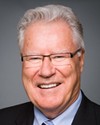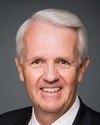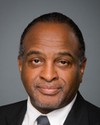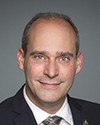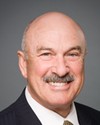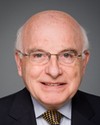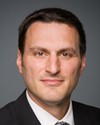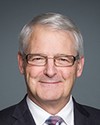moved:
Motion No. 1
That Bill C-49 be amended by deleting Clause 1.
Motion No. 2
That Bill C-49 be amended by deleting Clause 2.
Motion No. 3
That Bill C-49 be amended by deleting Clause 4.
Motion No. 4
That Bill C-49 be amended by deleting Clause 11.
Motion No. 5
That Bill C-49 be amended by deleting Clause 12.
Motion No. 6
That Bill C-49 be amended by deleting Clause 13.
Motion No. 7
That Bill C-49 be amended by deleting Clause 14.
Motion No. 8
That Bill C-49 be amended by deleting Clause 15.
Motion No. 9
That Bill C-49 be amended by deleting Clause 16.
Motion No. 10
That Bill C-49 be amended by deleting Clause 17.
Motion No. 11
That Bill C-49 be amended by deleting Clause 18.
Motion No. 12
That Bill C-49 be amended by deleting Clause 19.
Motion No. 13
That Bill C-49 be amended by deleting Clause 20.
Motion No. 14
That Bill C-49 be amended by deleting Clause 21.
Motion No. 15
That Bill C-49 be amended by deleting Clause 22.
Mr. Speaker, I am pleased to speak to these amendments. Many changes were needed. We still have very serious reservations about the bill creating the Canadian museum of history, which is quite unfortunate.
Normally, the creation, the birth, of a national museum should not be an acrimonious process. It is not reasonable for a government, even a majority government, to just announce a project like this and proceed without consultation and discussion among the parties in Parliament. It is certainly not right that this is being done despite the vocal opposition of experts, historians, anthropologists, archaeologists and ethnologists who are casting serious doubts on the merits of this government's project.
This is why we are rising to question this bill. In doing so, we also recognize that the government's proposal contains some very worthwhile elements. The minister is to be commended for his willingness to invest in this project—even if this is one-time funding for only one year—to get people talking about our country's history, and for the creative ideas that he has brought to the project. It is quite obvious that this project is very important to him.
However, other aspects of the proposal are problematic and quite serious. I am thinking in particular of the deletion of the words “research” and “collections” from the museum's mission. It would have been a good idea for the government to listen, if not to the opposition parties, then at least to the experts and, in particular, the witnesses who appeared before the Standing Committee on Canadian Heritage when the bill was being studied.
Sadly, the government did not listen. The amendments we proposed in committee—which would not have gutted the bill, but would certainly have improved it—would have allowed us to rectify the situation. All of the amendments were rejected, without consideration or discussion. Given that all of our amendments in committee were rejected outright, we are being forced to table a series of amendments today, which have been listed here in the House. This is a national, public museum; this could have been done more co-operatively. The government is forcing us to throw the baby out with the bath water.
We simply wanted to ensure that research remains part of the new museum and that any museum that takes the place of the Canadian Museum of Civilization remains an institution that maintains collections, as was the case with the Geological Survey of Canada more than 150 years ago. That function was enshrined in its mission, as stated in section 8 of the Museums Act. However, because of government intervention, that is no longer the case.
Today, we are faced with a government that is determined to rename and alter our most important national public institutions as it sees fit.
No one will change the government's mind, not even national associations representing historians, anthropologists and archaeologists, whose members still work at the museum and who are being ordered to work on this project as underlings. Even the architects of the current museum—which is known internationally for the work, creativity and talent of those architects—will not change the government's mind.
The few redeeming qualities of this project are being jeopardized by the minister's and the government's cavalier approach. Our doubts, along with those of experts, specialists and professional historians, have not been taken into account.
That is why we have to move much more significant amendments to get rid of the provisions that so many stakeholders found problematic. Our amendments would leave the name of the Canadian Museum of Civilization intact. That name is widely recognized, particularly in the tourism industry. It helps attract people to the Outaouais region and enhances Canada's international reputation.
The name is also recognized in the university and academic community, among researchers in history, anthropology, archeology and ethnology. Here and elsewhere, the name is a symbol of the excellence of our scientists and their contribution to human knowledge.
I suspect that many of those experts will be find it a nasty surprise to be associated with an institution that is no longer mandated to maintain a collection for research purposes. We are talking about a research institution that many researchers are affiliated with. Some of them have been for their entire careers.
Many of their international colleagues in museums like the Smithsonian and universities everywhere will ask them why Canada's flagship museum in Gatineau is slowly but surely getting rid of the leading lights that built its reputation.
Those who have been dazzled by the avalanche of announcements over the past few months, spectacular ads on TV and ostentatious initiatives can easily lose sight of that fact.
What is the museum now? The Canadian Museum of Civilization is not a showcase. It is a hive of research activity. The museum itself has two distinct aspects. It is physically divided into two structures. Those of us who have never visited the museum but who have at least seen it know that Douglas Cardinal's awesome design separates the museum into two gigantic buildings.
On the right is the part of the museum that is open to the public. It houses permanent and temporary exhibits on history and civilization. On the left is an equally important sinusoidal building that is no mere administrative or storage facility. It is the very heart of the museum, a building that houses the institution's expertise and its collections.
On behalf of the workers in that building, we are taking this opportunity to propose an amendment aimed at ensuring that research and collection development remain part of museum's mission, as is currently the case under the Museums Act.
I want to be perfectly clear: whether by accident or by design, the government is relieving the museum of its obligation to maintain collections for research purposes. I would remind the House that we wanted to put that wording back into the government's bill, but of course the Conservative majority rejected that in committee.
Why are the Conservatives so determined to undermine research and collection development? Can someone explain that to us? Is this request coming from the museum's management? We know the museum is having financial difficulties, so is management trying to reduce spending by eliminating research positions or getting rid of certain parts of the museum's collections? Since the Conservatives are so determined to eliminate the words “research” and “collection” from the museum's mission, we have to wonder if they do not plan to do the same thing at the museum as they have done elsewhere.
For instance, at Parks Canada, they have already cut staff—including curators—at our national historic sites. At Library and Archives Canada, they have deprived the institution of its experts by muzzling them and forcing them to obey a code of silence, even when their research projects required communication, discussion and peer review.
Generally speaking, the Conservatives have chosen to relieve federal institutions of their role as independent research bodies. Our country spent the past two centuries building spaces for creativity and independent thought, but the Conservatives needed only two and a half terms in office to reduce these institutions to a shadow of their former selves, subject to the whims of outside influences. What a shame.
As with these institutions, there is reason to question whether our museums are truly independent. With the summer recess just a few days away, our fears about the government's bill to repurpose the Canadian Museum of Civilization have been realized.
Our suspicions that the real purpose of the project was to allow the government to use the museum to promote its favourite topics are becoming a reality. The gap that must exist between the museum and the government has been narrowing over the past few years, and that is a growing concern given the subterfuge, half-truths and contradictions surrounding the minister's strange over-involvement in the museum.
We know that neither the museum nor the minister feels comfortable telling us when they talk and what they talk about. Do they talk on the phone? Is the minister in the habit of visiting the museum? What do they discuss during those visits? The museum's so-called independence means nothing as long as we do not have answers to these questions.
The independence granted to the museum in the legislation must also be granted in real life. We are concerned when we find out from the media about the shocking coincidences that are happening. Yesterday, we learned that, without any explanation, the museum suddenly cancelled the major exhibits that were supposed to be a key component of its programming, exhibits in which the museum had already invested $70,000. That means that the museum was doing more than just considering these exhibits.
On the contrary, it means that the head of the museum had to have known about and approved the details of the exhibit. He must have signed a cheque for and a contract with an internationally renowned museum, and he must have approved an advertising budget and the programming for this event.
It is somewhat ironic that one of the Canadian Museum of Civilization's current exhibits is called “Double Take”. The title is fitting since, after all those decisions were made and the museum spent $70,000 on an exhibit on underwear, the museum supposedly changed its mind unexpectedly. All of a sudden, the exhibit from the Victoria and Albert Museum in London is not good enough anymore.
A cheque from Nigel Wright is not going to make the facts reported yesterday morning go away. First, the Canadian Museum of Civilization's senior management spent $70,000 on an exhibit on underwear, and then they cancelled it out of the blue.
What happened? There are two possibilities: either the museum's president made reckless decisions and shamelessly wasted more than $70,000 of public money on an exhibit, before realizing that it was not to their taste, which would be a fiasco—and is what they would have us believe—or the museum did not make the decision and someone else did. Someone told the museum that the exhibit was a problem, but who? This reminds me of the time not so long ago when someone told the Museum of Science and Technology that some of their exhibits were problematic. That is called political interference.
Today, our suspicions are aroused and heightened by undeniable facts, by a $70,000 shortfall, and by contradictory denials here and there that only cast more doubt over the museum's independence. These facts paint a picture of a museum that should normally be independent under the Museum Act, but gives in to phone calls from the minister's office when certain exhibits are not to the minister's liking.
What we know today is that none of that ever happened. Experts at the museum were notified of the museum's new name and change in mandate. Experts outside the museum were consulted six months after the announcement, when the museum was already being dismantled. All those decisions were made somewhere between the museum's upper management and the minister's office. It seems that even travelling exhibits on underwear cannot escape outside scrutiny. There is nothing redundant or ridiculous about asking that our public institutions be free from political influence and interference.















